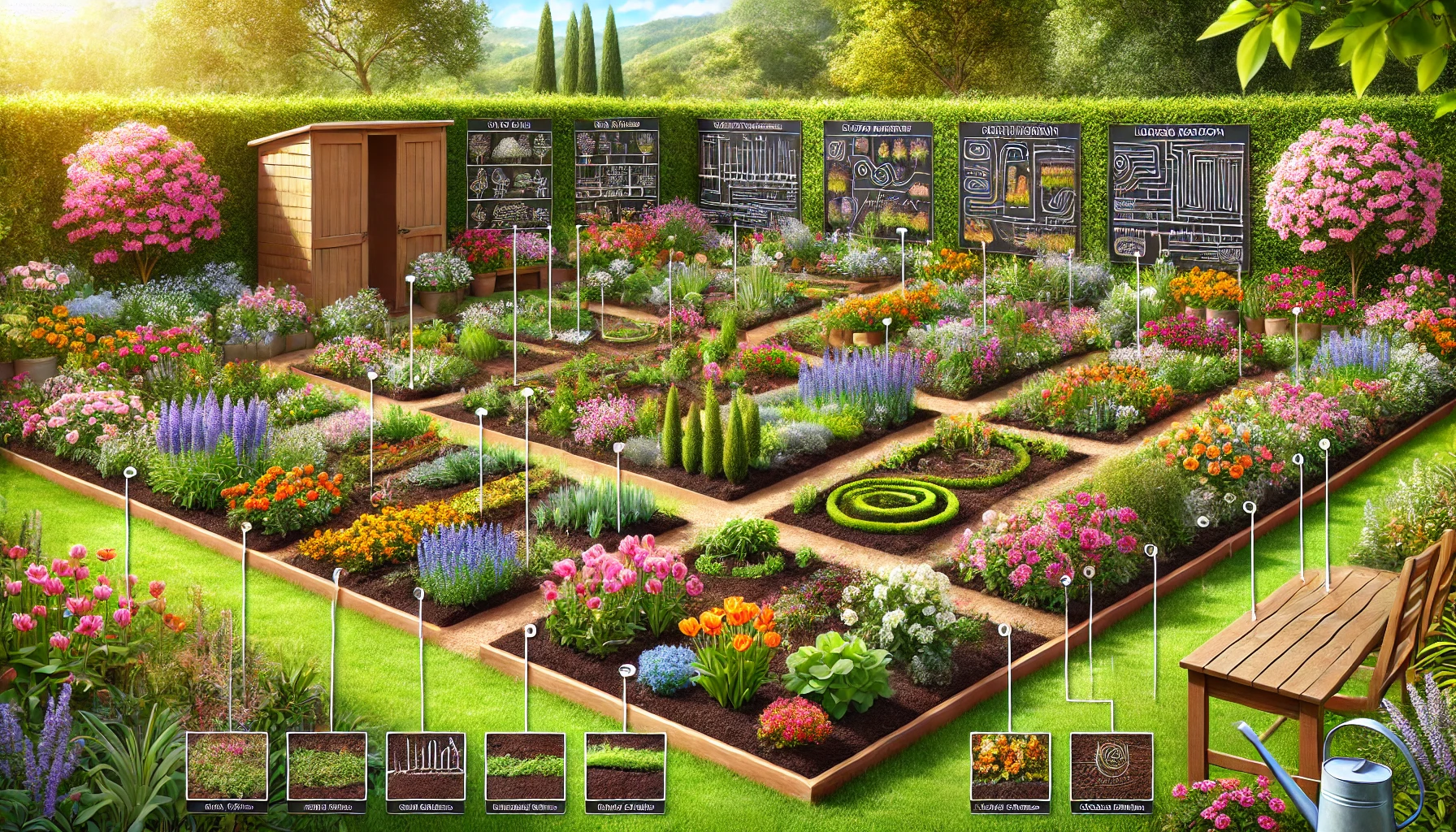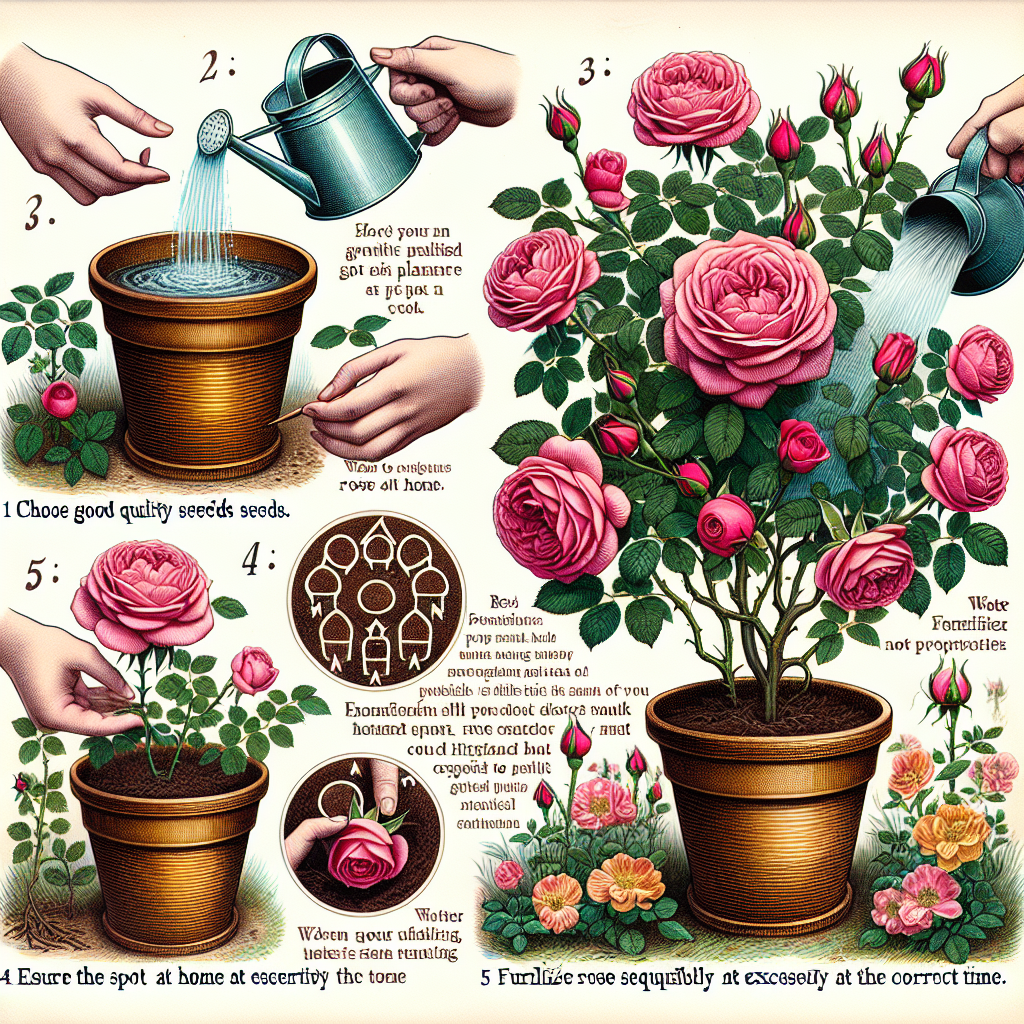Creating a flourishing flower garden is both an art and a science, requiring a blend of knowledge, patience, and passion. Whether you’re a seasoned gardener or a novice, understanding the essentials of gardening will help you cultivate a vibrant and healthy garden. From selecting the right plants to mastering watering techniques, this guide will walk you through the best practices for growing and caring for your flower garden.
Choosing the Right Plants
The foundation of any successful flower garden lies in choosing the right plants. Not all flowers are created equal, and the success of your garden depends largely on selecting plants that are well-suited to your specific climate and growing conditions.
- Climate Compatibility: Start by understanding your local climate, which will dictate the types of flowers that will thrive in your garden. For example, if you live in a region with hot summers and mild winters, drought-tolerant plants like lavender and marigold might be ideal. Conversely, if you reside in a cooler, wetter area, consider plants like ferns and foxgloves.
- Sun Exposure: Assess the amount of sunlight your garden receives throughout the day. Some flowers, like sunflowers and zinnias, require full sun to bloom profusely, while others, such as hostas and impatiens, thrive in partial to full shade. Understanding your garden’s light conditions will help you choose the right plants for each area.
- Soil Type: Different plants have varying soil requirements. Test your soil’s pH level and texture to determine whether it’s sandy, loamy, or clay-heavy. Most flowers prefer well-drained, loamy soil with a slightly acidic to neutral pH (6.0-7.0). If your soil is not ideal, consider amending it with compost or other organic matter to improve its fertility and drainage.
- Bloom Time and Height: To ensure continuous color and interest throughout the growing season, select a mix of plants with varying bloom times. Combine early bloomers like tulips and daffodils with mid-season flowers like peonies and roses, and late bloomers like asters and chrysanthemums. Additionally, consider the height of your plants when planning your garden layout, placing taller plants at the back and shorter ones at the front.
- Annuals, Perennials, and Bulbs: A balanced garden typically includes a mix of annuals, perennials, and bulbs. Annuals like petunias and marigolds provide instant color but need to be replanted each year. Perennials like daylilies and coneflowers return year after year, offering long-term beauty. Bulbs like tulips and lilies add seasonal bursts of color and often multiply over time.

Preparing the Soil
Once you’ve selected the right plants, the next crucial step is preparing the soil. Healthy soil is the cornerstone of a thriving garden, providing the nutrients and structure plants need to grow strong and resilient.
- Soil Testing: Before planting, it’s essential to test your soil to determine its pH level and nutrient content. Soil test kits are available at most garden centers and provide valuable information on what your soil may lack. Based on the results, you can amend the soil with the appropriate fertilizers or soil conditioners.
- Amending the Soil: If your soil is too acidic, adding lime can help raise the pH. If it’s too alkaline, sulfur or organic matter like pine needles can lower it. Incorporating compost, well-rotted manure, or other organic materials into the soil can improve its texture, drainage, and fertility, making it more hospitable for your plants.
- Ensuring Good Drainage: Proper drainage is vital to prevent waterlogged roots, which can lead to root rot and other plant diseases. If your soil tends to retain water, consider creating raised beds or incorporating sand or gravel into the soil to improve drainage. Raised beds also have the added benefit of warming up more quickly in the spring, allowing for earlier planting.
- Loosening the Soil: Before planting, loosen the soil to a depth of at least 12 inches to allow roots to penetrate easily and access nutrients and water. This can be done with a garden fork or tiller. Be careful not to over-till, as this can disrupt the soil structure and harm beneficial organisms.
Planting Tips
With your soil prepared, it’s time to get your hands dirty and start planting. Proper planting techniques are crucial to give your flowers the best possible start in their new home.
- Planting Depth and Spacing: Each type of plant has specific requirements for planting depth and spacing. As a general rule, bulbs should be planted at a depth two to three times their height, while seeds should be sown according to the instructions on the packet. Space your plants according to their mature size to ensure they have enough room to grow without overcrowding, which can lead to poor air circulation and disease.
- Watering After Planting: After placing your plants or bulbs in the ground, water them thoroughly to help settle the soil around the roots. This initial watering is critical to eliminate air pockets and ensure that the roots make good contact with the soil.
- Mulching: Applying a layer of mulch around your plants helps retain moisture, suppress weeds, and regulate soil temperature. Organic mulches like straw, wood chips, or compost also break down over time, adding nutrients to the soil. Spread mulch about 2-3 inches thick, being careful not to pile it against the stems of your plants, which can cause rot.
Watering and Feeding
Watering and feeding are ongoing tasks that are vital to the health and vibrancy of your flower garden. Understanding when and how to water and fertilize can make all the difference in the success of your plants.
- Watering Deeply and Regularly: Rather than frequent, shallow watering, aim to water deeply but less often. Deep watering encourages roots to grow deeper into the soil, making plants more drought-tolerant. The best time to water is early in the morning when temperatures are cooler and less water is lost to evaporation.
- Efficient Watering Techniques: To conserve water and ensure it reaches the roots, consider using a soaker hose or drip irrigation system. These methods deliver water directly to the soil, reducing waste and keeping foliage dry, which helps prevent fungal diseases.
- Feeding Your Plants: During the growing season, most flowering plants benefit from regular feeding. Use a balanced fertilizer or compost tea every 4-6 weeks to provide essential nutrients. Be mindful not to over-fertilize, as this can lead to excessive foliage growth at the expense of flowers. Organic fertilizers are often preferred because they release nutrients slowly and improve soil health over time.
Deadheading and Pruning
To keep your flower garden looking its best and encourage continuous blooming, regular deadheading and pruning are essential practices.
- Deadheading: Removing spent flowers, or deadheading, encourages plants to produce more blooms instead of setting seed. This simple task can significantly extend the flowering period for many plants, such as roses, geraniums, and zinnias.
- Pruning: Pruning helps maintain the shape and health of your plants. After flowering, prune back shrubs and perennials to remove dead or damaged stems and to encourage new growth. For some plants, like hydrangeas, timing is crucial—prune at the right time of year to avoid cutting off next season’s blooms.
- Cutting Back in Fall: As the growing season winds down, cut back perennials once the foliage has died back. This helps prepare your garden for winter and reduces the risk of pests and diseases overwintering in the garden debris.
Weed Control
Weeds compete with your flowers for water, nutrients, and light, making weed control an important part of garden maintenance.
- Regular Weeding: Make it a habit to pull weeds as soon as you see them. Removing the entire root system is crucial to prevent them from regrowing. Weeding is easiest after rain when the soil is soft, allowing you to pull roots out more effectively.
- Mulching for Weed Prevention: Mulch not only conserves moisture but also blocks light from reaching weed seeds, preventing them from germinating. A thick layer of mulch (2-3 inches) is one of the most effective and natural ways to keep weeds at bay.
- Using Tools for Larger Areas: For larger gardens, consider using a hoe or cultivator to remove weeds. These tools allow you to quickly clear weeds without disturbing your flowers. Be cautious when using them around delicate plants to avoid damaging roots.
Pest and Disease Management
A healthy garden is less susceptible to pests and diseases, but it’s important to be proactive in managing these potential problems.
- Identifying and Removing Diseased Parts: Regularly inspect your plants for signs of disease or pest infestation. Remove any affected leaves, stems, or flowers to prevent the spread of the problem. Dispose of diseased plant material properly—never add it to your compost pile.
- Organic Pest Control: When pests do appear, opt for organic control methods like insecticidal soap, neem oil, or homemade sprays. These options are safer for the environment and beneficial insects. For example, ladybugs and lacewings are natural predators of many common garden pests, and encouraging them can help keep pest populations in check.
- Encouraging Beneficial Insects: Planting a variety of flowers that attract beneficial insects is a natural way to control pests. Marigolds, dill, and yarrow, for example, attract ladybugs, lacewings, and parasitic wasps, which feed on aphids and other harmful insects.
Winterizing Your Garden
As the seasons change, it’s important to prepare your flower garden for winter. Proper winterization ensures that your plants survive the cold months and come back strong in the spring.
- Cutting Back Perennials: After the first frost, cut back perennials to the ground. This prevents pests and diseases from overwintering in the dead foliage. However, some plants, like ornamental grasses, provide winter interest and habitat for wildlife, so consider leaving these until early spring.
- Mulching for Winter Protection: Apply a thick layer of mulch around the base of your plants to protect the roots from freezing temperatures. This is especially important for plants that are marginally hardy in your climate.
- Lifting Tender Bulbs: In regions with harsh winters, lift and store tender bulbs like dahlias, cannas, and gladiolus before the ground freezes. Store them in a cool, dry place over the winter and replant them in the spring.
By following these best practices, you’ll be well on your way to growing a beautiful, healthy flower garden that you can enjoy year after year. Gardening is a journey—start small, choose plants you love, and savor the process as your garden blossoms into a vibrant display of color and life. For more detailed information and gardening tips, explore resources from gardening experts and local extension services to continually expand your knowledge and skills.




